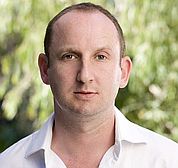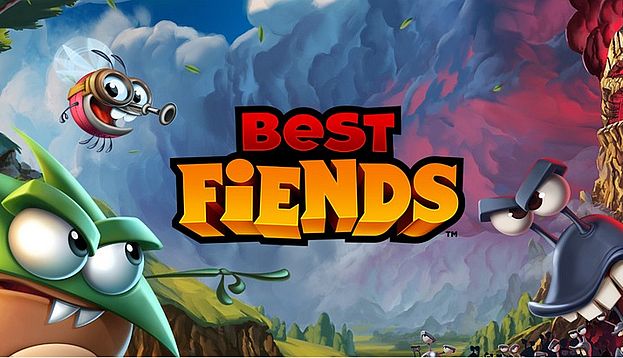Mobile games are evolving rapidly on multiple levels, from a technical perspective, marketing, graphics, and increasing sophistication of game design. One of the mobile entertainment startups that shows this evolution is Seriously, a startup packed with talent from Fox, Disney, Rovio and Natural Motion. The company’s mobile game Best Fiends is a visually stunning puzzle game that was selected by Apple as Best of October 2014.
Seriously has raised a total of $10 million dollars to help bring its vision of the future of mobile gaming to life. “We’ve been thrilled with the reaction to our first title,” said Andrew Stalbow, CEO of Seriously. “The additional funding gives us extra firepower to extend our talented team of 13 people as we take our strategy of creating global entertainment brands ‘mobile first’ to a new level.”
The [a]listdaily caught up with Stalbow prior to his appearance on a panel at the [a]list summit Mobile Marketing for Brands and Entertainment, taking place on December 3, so he could share with us some thoughts on the mobile games market and the importance of brands.
[a]listdaily: What led you to form Seriously
 Andrew Stalbow
Andrew Stalbow
Andrew Stalbow: I saw the power of games as a platform for entertainment companies to really build their properties out. I worked at Rovio for a couple of years, where I was responsible for their biggest commerical deals with people like Lucasfilm for Angry Birds Star Wars. We treated the game as an entertainment IP, and we built it out. When I founded my new company, Seriously, we basically said to ourselves “Can we build the Pixar of mobile ” So we have our first game that just came out, Best Fiends, and it’s performing really well — it got 1 million downloads in its first 6 days — with a small but talented development team creating games that feel like one day they might be great big movies. They start their lives as fun things on mobile devices, and effectively what we do is build entertainment as a platform.
It’s very exciting to be in this business. Audiences migrate like crazy to mobile devices… not just for communication, but for content consumption as well. The average American spends an hour playing games on their smartphone and tablet. It’s a huge opportunity.
[a]listdaily: There are plenty of companies making mobile games these days, and some are saying the market is too crowded — while others say that mobile games are still in the early days. What do you think
Andrew Stalbow: I think we’re just at the beginning. That said, there are definitely some early winners emerging. The big guys are spending tens of millions of dollars on promoting their new launches. The biggest mobile game releases are going to get backed with movie marketing style budgets. The little guy, a developer from Vietnam, can create Flappy Bird and it can become a global phenomenon. But it’s also getting increasingly hard to cut through.
[a]listdaily: Where’s the opportunity for success in mobile games Is it geographic, or a particular genre, or quality Where do you focus your effort
Andrew Stalbow: I don’t know all the answers, but I know what we’re doing. I want to differentiate through quality. Our opportunity is to build games that feel like they’re taking the products to the next level.
[a]listdaily: Many companies have really stepped up their efforts, especially on graphics, but success is more than just about graphics, isn’t it
Andrew Stalbow: I think that’s right. For us it’s about producing something that’s visually stunning and trying to take a gameplay genre and use it as a way to introduce great big IP. We’ve been focused on story, great characters, a conflict, unique setting, amazing music and a really great back story, and combining that with a really fun game and seeing if we can build something that way.

[a]listdaily: Discoverability is a huge issue, though, regardless of the game, don’t you think
Andrew Stalbow: What we believe is great products do win through. The way we approached the market was by building something that has really great retention, great engagement, we can build a business on the back of that. Our view was, “Can you build something that takes a genre to the next level ” and then build a business around that. It’s not easy to cut through, but it’s a very democratized platform and there are some early winners emerging.
[a]listdaily: The rise of social media has meant great audience involvement, but some mobile game companies don’t seem to put much effort into connecting with the audience. Do you feel that’s important
Andrew Stalbow: I think that trick on great products, whether they be on mobile or whether they be on digital platforms or on consoles, the really successful stuff gets to a place where its audience becomes its CMO. That’s the opportunity that social media presents. If you can create something that’s compelling enough that people want to shout about it, and tell their friends, then you’ve got a product that can really connect.
I think there’s been a huge shift in the whole entertainment industry, whether it be games or TV or movies, any kind of content consumption. The content creator has this opportunity now, through mobile and other digital platforms, the content creator can be directly connected to his own audience. In days gone by that never happened. Now I believe there’s a transition you’re going to see over the next few years. The biggest brands are going to be directly connected to their own audience, they’re going to leverage the network effect They’ll get to see what the audience likes and what they don’t like. You’re building a service out and not a product, and its a huge opportunity for people to build their apps into platforms for their brands. I think it’s a super-exciting time.
[a]listdaily: I think building a great audience is as difficult as building a great game, and these days developers have to be as creative with their marketing as they are in developing games. Do you agree
Andrew Stalbow: Yes, that is exactly what I say as well. There are four things you can do as a game developer to really promote your product. Number one is build a great product. People will shout about it if they love it. Number two is communicate lots and lots and tell anybody that’s up for listening that you’ve got something pretty exciting. Number three is performance marketing, and that’s where you really come up against the big guys. That’s install, acquisition, on Facebook and plenty of other mobile app platforms. I think that’s a necessary place to be but it doesn’t build your brand and you’re competing with people that generally have very, very big budgets.
But the place where I think game developers, especially smaller and more independent developers, can compete is creative marketing. If you’re creative about how you communicate your game, you can do some amazing stuff. There’s a whole lot of options available to you.
In days gone by there were very traditional ways of marketing media products. Look at the formulaic way many movie studios have marketed their movies. There is no formula any more, but there’s also an amazing opportunity for even the smallest guy to find ways to reach an audience, whether it’s through places like YouTube or Facebook or Twitter. Twenty years ago the smallest guy couldn’t have afforded to market their game and needed to find a publisher to get distribution and marketing, now they have an opportunity to find their audience. The downside of having to find your audience is actually all upside. The power is in the content creator’s hands.

